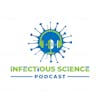In this blog post, we delve into the fascinating field of science communication (SciComm) and explore how it plays a crucial role in educating the public about infectious diseases. We investigate the various methods and approaches scientists, journalists, and public health officials use to communicate complex information to a diverse audience effectively. From traditional media to social media platforms, we delve into the challenges and opportunities in disseminating accurate and timely information about infectious diseases. Through real-life examples and case studies, we highlight the impact of SciComm in shaping public understanding, dispelling myths, and promoting informed decision-making during outbreaks. Join us on this journey as we uncover the fascinating world of SciComm and its critical role in safeguarding public health.
The Importance of SciComm in Infectious Diseases:
What is SciComm?
Science communication, or SciComm, is the practice of conveying scientific information to non-expert audiences in a clear and accessible manner. It involves translating complex scientific concepts into language the general public can understand.
Understanding Infectious Diseases
Infectious diseases are illnesses caused by pathogenic microorganisms, such as bacteria, viruses, parasites, or fungi. These diseases can spread from person to person and often require effective communication strategies to prevent and control their transmission.
Why Effective Communication is Crucial
Effective communication is crucial in infectious disease outbreaks as it helps raise awareness, promote preventive measures, and address public concerns. It ensures that accurate and timely information reaches the public, enabling them to make informed decisions about their health and safety.
Methods of Communicating Infectious Diseases
Traditional Media
Traditional media channels, such as newspapers, magazines, radio, and television, have long been used to communicate information about infectious diseases. They reach a broad audience and provide in-depth coverage, making them tools in SciComm.
Social Media
Social media platforms, like Facebook, Twitter, and Instagram, have become powerful tools in SciComm. They allow for real-time information sharing, engagement with the public, and amplification of critical messages. However, the spread of misinformation on these platforms also poses challenges.
Infographics and Visuals
Infographics and visuals are practical tools for simplifying complex information. They use images, charts, and graphs to convey key messages and make data more accessible and engaging for the public.
Online Resources and Websites
Online resources and websites, such as government health agencies, scientific institutions, and non-profit organizations, provide valuable information on infectious diseases. They offer comprehensive resources, guidelines, and FAQs to educate the public and address their concerns.
Public Presentations and Events
Public presentations and events, such as town hall meetings, conferences, and workshops, facilitate direct engagement between experts and the public. They provide an opportunity for two-way communication, allowing the public to ask questions and receive accurate information.
Challenges in Communicating Infectious Diseases
The Complexity of Scientific Information
Scientific information about infectious diseases can be complex and challenging for the general public to understand. Communicators must simplify complex concepts without oversimplification or distorting the underlying science.
Misinformation and Fake News
Misinformation and fake news can spread rapidly during outbreaks, causing confusion and hindering public health efforts. SciComm professionals must combat misinformation through fact-checking, providing accurate information, and debunking myths.
Language and Cultural Barriers
Language and cultural barriers can impede effective communication. SciComm efforts should consider cultural nuances and language diversity to ensure that information is accessible to all population segments.
Addressing Public Concerns and Fears
During outbreaks, the public may have concerns and fears that must be addressed. SciComm professionals should provide empathetic and accurate information to alleviate fears, build trust, and promote adherence to preventive measures.
Successful Examples of Infectious Disease SciComm
Outbreak Investigations and Rapid Response
During outbreaks, rapid response and investigation are crucial. Effective SciComm can inform the public about the ongoing investigations, preventive measures, and progress in controlling the outbreak.
Community Engagement and Participation
Engaging the community in infectious disease communication fosters ownership and encourages participation in preventive measures. It involves listening to community concerns and involving them in decision-making processes.
Collaboration between Scientists and Journalists
Collaboration between scientists and journalists ensures accurate reporting and enhances public understanding of infectious diseases. Scientists provide technical expertise, and journalists deliver the information in a way that is accessible and engaging.
Education and Awareness Campaigns
Education and awareness campaigns play a vital role in SciComm. They use various platforms and strategies to disseminate accurate information, debunk myths, and empower individuals to take necessary preventive measures.










